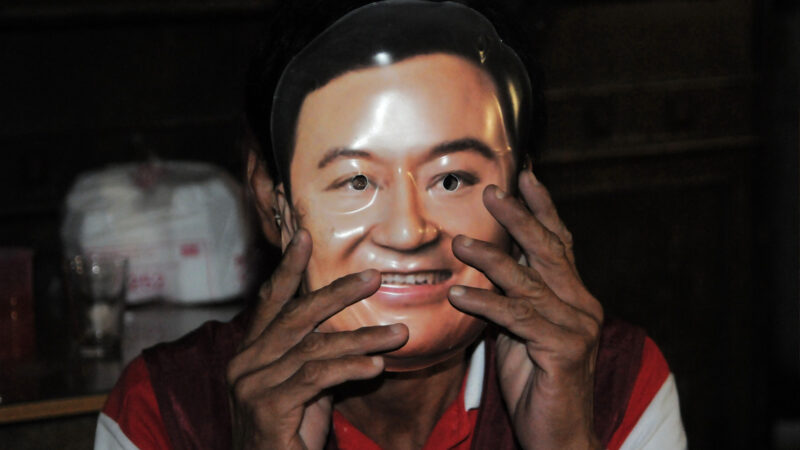Why is culture important for brands and especially local brands? How is Asian beauty different from Western beauty? And what kind of insights can help brands truly capture the uniqueness of any consumer culture? Using examples of beauty culture, this article demonstrates the importance of deeper cultural understanding and the limits of data of any size versus more qualitative and implicit insights into local consumer culture.
Geert Hofstede defined culture as, “the collective programming of the mind … that distinguishes the members of one group from another”. That is, culture is the shared attitudes, opinions, beliefs and, above all, experiences and values that one group of people share, making them different from another group.
Geert Hofstede developed a model of cultural differences which now has six dimensions. Power Distance is the extent to which cultures are hierarchical with power distributed unequally. Uncertainty Avoidance is the extent to which people feel threatened by uncertainty or ambiguity. Individualism (versus Collectivism) reflects societies where values reside in the individual versus social networks (one of the best known differentiators of Asian and Western cultures). And don’t forget that 80% of global population live in Collectivist cultures!
Assertiveness (what Hofstede calls Masculinity versus Femininity) reflects the importance of achievement versus quality if life. Long Term Orientation reflects Confucian work dynamism and a long-term view versus a short-term view. Indulgence (versus Restraint) reflects the happiness people experience, their control over their lives and the importance of leisure.
ASEAN countries, like Vietnam, generally have high Power Distance and low Individualism (i.e., they are Collectivist) but have differences on other dimensions where they sit in between other countries. But what can these dimensions tell us about consumer behaviour?
Let’s look at Uncertainty Avoidance and Japan which is very high on this dimension. Japan has the highest per capita consumption of bottled water in the world and is a culture where people prefer to pay in cash rather than with credit. These reflect a lack of comfort with ambiguity and uncertainty.
In general, beauty category sales are correlated with economic development, but beyond this low Power Distance and Short Term Orientation are also correlated with higher sales. More generally, Low Power Distance cultures use cosmetics to look young, while high Power Distance cultures use cosmetics as status symbols (to keep “face”). Usage of cleansing creams is correlated with Long Term Orientation (looking to the future), and usage of hair conditioners and hair styling are higher in cultures which are more Indulgent.
These are useful data points but can’t really help us truly understand an individual culture. Edward T. Hall wrote that, “culture hides much more than it reveals. And strangely enough what it hides, it hides most effectively from its own participants”. I’m from the UK and understand much about British culture, but there are many things about British culture that I didn’t realise until I moved to Asia almost 20 years ago.
Much of culture we take for granted and don’t explicitly acknowledge. At the same time, many things about culture are implicit in the way we think and behave although we are not conscious or aware of what we do. That’s why TapestryWorks use implicit visual approaches to research to capture the values and emotions that drive behaviour while remaining hidden from consciousness.
For example, in one recent validation, TapestryWorks asked online survey respondents to select verbal concepts (words and phrases) that reflected the “beauty you desire for yourself” from a selection of 36 ideas reflecting 12 core motivations. The overwhelming answer was that beauty was all about “confidence” and “charisma” (concepts that fall in the same segment). These choices dominated choices across four countries (Australia, Indonesia, Thailand, UK) giving a very one-dimensional view of beauty needs.
When we asked the same question based on visual stimulus, chosen to be consistent with verbal stimulus, five concepts are consistently important across all countries, although priorities are different depending on the country. So, beauty moves from a single motivation of “Confidence” to five different motivations of “Confidence”, “Strength”, “Harmony”, “Discovery” and “Enjoyment”.
Arguably all five are forms of confidence that are specific to different contexts and cultures. The differences between priorities are revealing, Confidence is in first or second place in all four countries, not a clear first everywhere as with the verbal test. Confidence only comes second in Australia and Thailand. In Australia, Strength comes first. Strength is also second in UK and comes in fifth place in Indonesia and Thailand. In Thailand, Harmony comes first. Harmony is also second in Indonesia and comes in fifth place in Australia and UK.
Western cultures place more emphasis on strength, a motivation associated with independence and focused on the individual. Asian cultures place more emphasis on harmony, a motivation associated with interdependence and focused on society and other people. This is the key difference in how Western and Asian cultures perceive beauty.
To understand more about harmony, let’s look specifically at Japan, not included in this survey, and how Japanese women perceive beauty. Japanese women value order, structure and harmony, focusing on respect for other people and polite behaviour. Above all, they do not want to disrupt and stand out, or as one Japanese woman says, “I want to be independent. But at the same time, I’m concerned about what other people think about me”.
Successful Japanese brands such as Orbis and Haku, reflect this value by focusing on purity and simplicity in their look and feel. Even more sophisticated and international Japanese brands such as SK-II and Shiseido have a clean and elegant look and feel.
Moving to a very different culture (although often assumed to be similar), South Korean women are much more competitive about beauty. South Korea is a collectivist society, so women are not necessarily competing with each other as competing with themselves. They value a naturally beautiful body and are prepared to work for it. They value physical and mental effort in striving to be the best that they can be (which is why they are also more open to extreme solutions such as cosmetic surgery).
Successful South Korean brands such as Sulwhasoo and Missha communicate this striving for perfection through their highly finished and “perfect” look and feel without showing the effort required to achieve this end result. These perfect looks are sometimes too perfect (in my opinion), so that even brands focusing on fun or nature (e.g. The Face Shop) have a slightly overdone look, which isn’t what I (as a non-Korean) associate with fun or nature.
Finally, Indonesian women have a very different outlook on beauty, very different from that in South Korea. They value their friends and social groups who provide support and affirmation of their beauty. Smiles are valued and considered to enhance beauty and as one Indonesian woman says, “If you look sad, you will look ugly”. Friendships and social needs are even an important consideration in whether to shop online or go out.
Wardah, SariAyu and other successful local brands focus on these values of acceptance and belonging in the way that they look and feel. Situations are casual and everyday as are brand stories even when involving celebrities. International brands such as Sunsilk are catching on and following suit, but they have a long way to go to catch up with a brand like Wardah with more than a third of the market.
To summarise, South Korean women strive for perfection, combining an active approach to beauty with a formal and impersonal culture. Japanese women strive for purity, combining formality and a passive approach. Indonesian women are also passive, but in a more personal and friendly culture they seek acceptance. Malaysian women live in a friendly culture too, but are more active in their approach to beauty and are aspirational in a culture which is more status driven.
Understanding local culture is the key to success in Vietnam or any other country. However, to truly understand local culture you may need to take a step back and ideally compare your local market with others to see what makes it unique. To paraphrase Edward Hall’s view on culture, “Fish can’t see water”.
And to use another quote, “Culture eats strategy for lunch”. Understand your local culture first, develop a brand strategy that embeds local cultural values and then execute this strategy. Consider, not only how you should be explicitly local, as that is easy. The more important question is how can you be implicitly local? By that I mean what can you do with the look and feel of your brand, your customer only needs to glance at it to understand, “this is me”.
[This is a written version of a presentation for Vietbeauty and Mekong Beyond Beauty 2019 in HCMC, Vietnam on 22 August 2019. You can access the slides, including 3 bonus slides, at SlideShare here.]
REFERENCES
Cultures and Organizations: Software of the mind by Geert Hofstede
Consumer Behavior & Culture: Consequences for global marketing and advertising by Marieke de Mooij
Brand esSense: Using sense, symbol and story to design brand identity by Neil Gains






